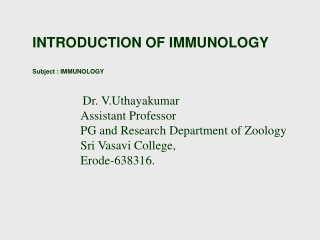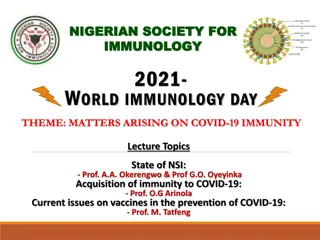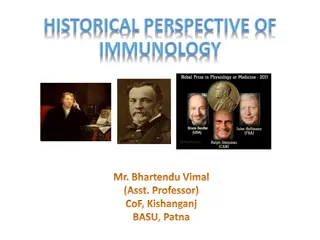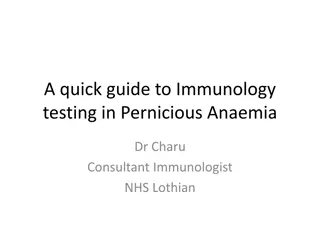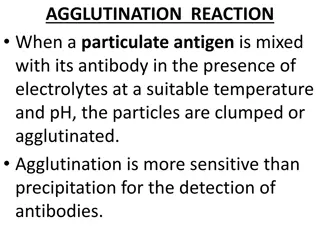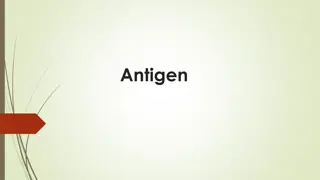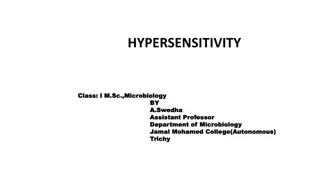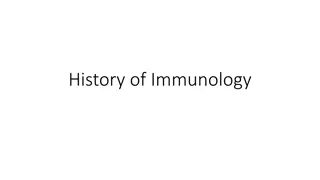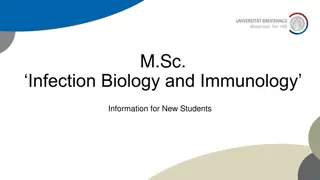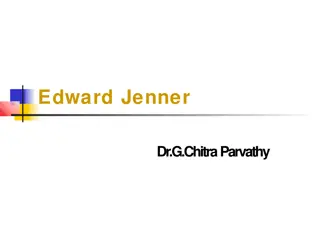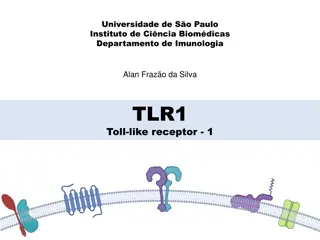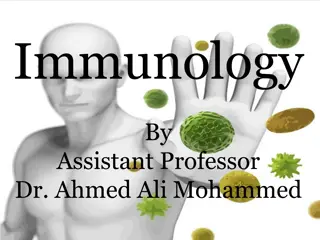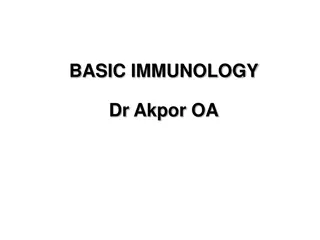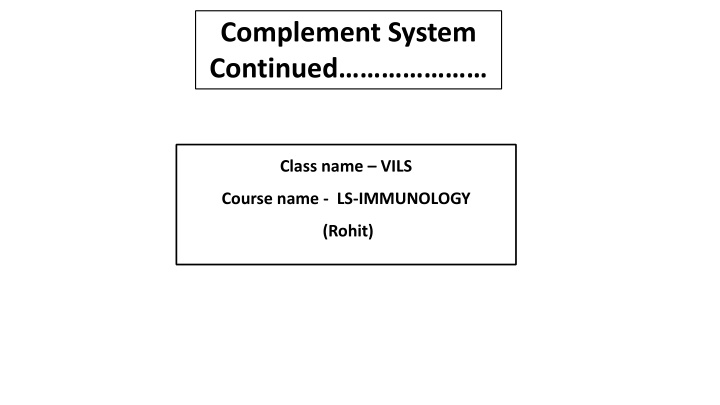
The Complement System in Immunology
Explore the complex mechanisms of the complement system in immunology, including the fluid phase C3 convertase, membrane-bound C3 convertase, C5 convertase formation, alternate pathways, and the role of cytokines in intercellular communication within the immune system.
Download Presentation

Please find below an Image/Link to download the presentation.
The content on the website is provided AS IS for your information and personal use only. It may not be sold, licensed, or shared on other websites without obtaining consent from the author. If you encounter any issues during the download, it is possible that the publisher has removed the file from their server.
You are allowed to download the files provided on this website for personal or commercial use, subject to the condition that they are used lawfully. All files are the property of their respective owners.
The content on the website is provided AS IS for your information and personal use only. It may not be sold, licensed, or shared on other websites without obtaining consent from the author.
E N D
Presentation Transcript
Complement System Continued Class name VILS Course name - LS-IMMUNOLOGY (Rohit)
Alternate Tick over pathway 1. We have discussed Fluid phase C3 convertase Diagram depicts how fluid phase C3 convertase forms.
Membrane bound C3 convertase 1.C3(H2O)Bb complex (Fluid phase C3 convertase) cleaves C3 INTO C3a and C3b. 2.Some C3b molecules binds to microbial surface. 3.Now Factor B binds newly attached C3b molecules on microbial surface 4.Factor D again cleaves factor B and C3bBb complex will form. 5.This complex has C3 convertase activity. 6.So in this way membrane bound C3 convertase forms.
C5 convertase formation 1. Cell bound C3bBb C3 convertase is unstable. 2. So it is bound by a protein called Properdin 3. Properdin is a serum protein. Also called factor P. 4. Now this C3 convertase will cleave more C3 protein into C3a AND C3b. 5. We know that when C3b binds with C3 convertase, it will form C5 convertase protein. 6. C5 plasma protein will act as a substrate for above enzyme and cleaves C5 into C5b . 7. C5b will actively involve in MAC complex (Membrane Attack Complex) with other plasma proteins (C6/C7/C8/C9).
Alternate Properdin Activated pathway 1. Here Properdin not act as regulatory factor to provide stability to C3bBb complex but itself initiates the alternate pathway. 2. Rest of the things are similar to the previously discussed pathway. Here we can see properdin is first to initiate the pathway 3. There is a experimental evidence that properdin can act as Pattern Recognition Receptors (PRR) and properdin deficient patients are more susceptible to Neisseria gonorrhoea bacterial infection.
The alternate-protease Activated pathway 1.Thrombin dependent pathway 2.C5 is cleaved by help of thrombin into C5a and C5b. 3.Thrombin is a blood clotting protein. 4.In a C3 protein deficient mice where there is no C3b protein to form C5 convertase, Thrombin pathway mediated C5 protein cleavage observed.
(Unit 5, Working of immune system) (Unit 5, Working of immune system) Cytokines Cytokines Class name VILS Course name - ZOO-Biotech (Rohit)
Cytokines (Greek, Cytokines (Greek, cyto cyto- -cell & cell & Kinos Kinos- -movement) movement) Cytokines communicate among cells of the immune system. They are secreted by immune cells in response to a number of stimuli. are immunoregulatory molecules or molecules that Generally they are soluble molecules that interact with their receptors on target cells and triggers signal transduction pathways that ultimately alter gene expression in the target cells. Chemokines are sub-population of cytokines that share the specific purpose of mobilizing immune cells from one organ. They belongs to a class of molecules called Chemoattractants. Many cytokines ate referred to as interleukines, as they are secreted by some leucocytes. (interleukins communicate between (Latin, inter) white blood cells (leukocytes)
As cytokines and their specific receptors shows high affinities to each other so, they are required in very small quantity even picomolar concentration. e.g. proliferation, differentiation, cell death etc)
Basic properties of Cytokines Basic properties of Cytokines A cytokine may bind to receptors on the membrane of same cell that secreted it, exerting autocrine action. It may bind to target cells in close proximity to producer cells thus exerting paracrine action. It may bind to target cells in distant part of the body so exerting endocrine action.
Cytokines may act on its target cells in following fashion Cytokines may act on its target cells in following fashion
Cytokines Vs Hormones Cytokines Vs Hormones 1. Hormones generally act at long range in an endocrine fashion whereas most cytokines act over a short distance in an autocrine or paracrine fashion. 2. Most hormones are produced by specialised glands and tend to have a unique action on one or few types of target cell whereas cytokines are often produced by and bind to a variety of cells.
Cytokines has the ability to regulate the intensity and duration of the immune response by stimulating or inhibiting proliferation and/or differentiation of various cells or by regulating the secretion of antibodies or other cytokines. the activation,
Cytokines attributes Cytokines exhibit the attributes of :- 1.Pleiotropy 2.Redundancy 3.Synergy 4.Antagonism 5.Cascade induction
Pleiotropy When a given cytokine that has different biological effects on different target cells Same cytokine (i.e IL-4, Interleukin-4) act on different cells (B-cells, T cells and mast cells) induce effects. and different
Redundancy When 2 or more cytokines that mediates similar functions are said to be redundant There are 3 cytokines (IL-2/4/5) and all binds to same target cell (B cell) and induce proliferation.
Synergy Cytokines synergism occurs when the combined effect of 2 cytokines on cellular activity is greater than the additive effects of the individual cytokines.
Antagonism Cytokines exhibit antagonism that is the effects of one cytokine inhibit the effect of another cytokines. Here IL-4 action is inhibited by IFN-gamma.
Cascade induction It occurs when the action of cytokine on target cell induces that cell to produce one or more cytokines which in turn may other target cells to produce cytokines. one induce more


